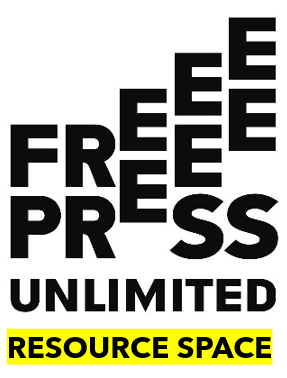Women’s voices and perspectives are often underrepresented in media content. However, there are a number of strategies that can be employed to increase the participation of women, including:
Toolkit
Reflect Reality is a resource and toolkit for newsrooms, journalists and business professionals to increase women as sources in the news media.
A Gender Balance Guide for Media by Women in News aims to equip media organisations and professionals with the necessary tools and insights to increase gender balance in their content.
Women expert databases
A number of useful databases have been created globally to assist journalists to find and contact women experts on various topics.
These databases make women experts more visible and accessible to journalists, enabling their voices to be included in the media more easily. Women’s organisations can also be used to help journalists and editors to broaden their contact lists.
- In the Democratic Republic of Congo, Free Press Unlimited supported UCOFEM in assembling the so-called FERES guide, a list of more then 5000 female resource persons that can be contacted by Congolese media.
- In the Netherlands, the platform Vaker in de Media connects (mostly) women experts with journalists and also actively coaches the experts in how media work and how to present themselves to media. In this database, experts can also actively approach journalists with, for example, press releases.
Women expert databases around the world
Reflect Reality composed an overview of women expert databases per region around the world.
Learn more
Good practice – KVINFO Expert Database by the European Institute for Gender Equality provides tips for establishing a successful expert database.
Women’s media
In addition to increasing women’s voices throughout all media, it can also be important to create media spaces specifically for women. A number of media outlets exist, particularly online, focused on news for women by women. Here, women are able to tell their stories, express themselves, connect with each other and learn about topics that are relevant to them. Women are able to make their voices heard, and to report about issues relevant to them.
Examples include:
- Gal-Dem in the United Kingdom is an online and print publication committed to sharing perspectives from women and non-binary people of colour.
- Lilith in the Netherlands is an intersectional feminist media platform and a glossy where predominantly women and other marginalized speak about politics, economics, media, art, fashion and science.
- Primer in Australia combines fashion & beauty with stories on current affairs and issues that matter to women.
- Puan Indonesia collects women’s stories in Indonesia.
- Alharaca is a digital medium run by Spanish-speaking women, specialized in innovative journalism on gender, diversity and inclusion.
- The 19th is a newsroom reporting at the intersection of gender, politics and policy in the United States.
- Prism is committed to producing the kind of journalism that treats Black, Indigenous, and people of color, women, the LGBTQ+ community, and other invisibilised groups as the experts on our own lived experiences, our resilience, and our fights for justice.
Practical guide
A practical guide to setting up a digital, diverse, media business, by Div-A, Diversity Accelerator, Council of Europe.
News
Women-focused non-profit newsrooms surge forward in 2020, article by Sara Fischer, August 4, 2020.
Awards
Awards can be a great way to acknowledge and encourage gender equality in the media. Awards can recognise individual journalists, organisations or stories. They may focus on a specific region or type of media. For example:
- In Mali, Free Press Unlimited partner organisation Tuwindi includes a gender award in its yearly Mali Media Awards.
- In the Netherlands, the Vrouw in de Media award is given annually to women experts with high visibility in media.
- The Wan-Ifra Women in News Editorial Leadership Award recognises an exemplary contribution of an editor to her newsroom and under her leadership, the contribution of her newspaper to society.
#WikiGap
Ninety per cent of those who add content to Wikipedia are men. There are four times as many articles about men as there are about women. #WikiGap events gather people around the world to add more content to Wikipedia about women figures, experts and role models in various fields.
